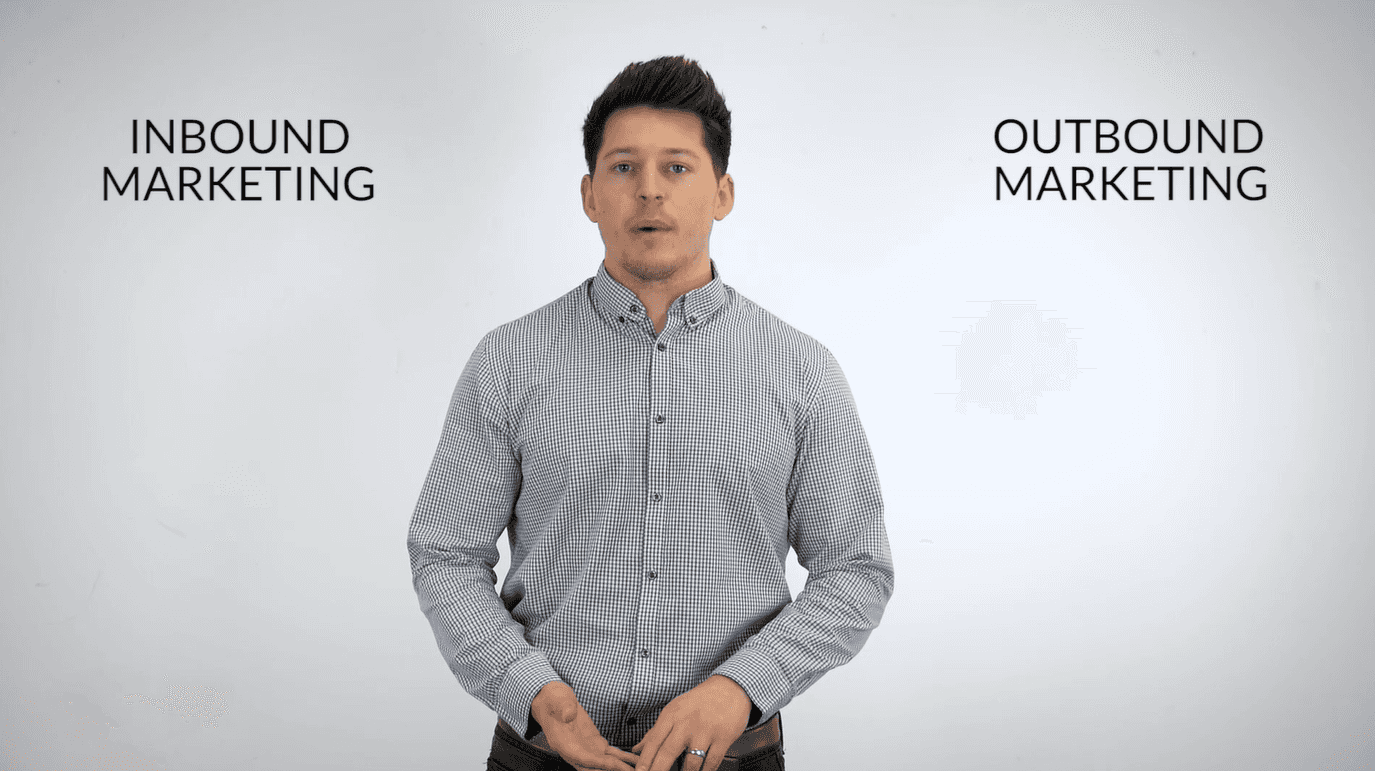
intro.
If you’re new to the world of online marketing, some of the terms might seem confusing. That’s fair enough: it’s a jargon-heavy industry! Two of the most common terms are ‘inbound’ and ‘outbound’ marketing. Here, we’re going to take a look at the difference between the two.
WHAT IS OUTBOUND MARKETING?
Outbound marketing is simple to understand: it’s everything you currently think of as advertising.
All of the traditional advertising methods are outbound: TV and radio, newspaper ads, telemarketing, outdoor ads, direct (postage) mail and so forth.
The term ‘outbound’ comes from the idea that you push the advertising ‘out’ to recipients, hoping that it’ll convert enough to ensure you still get a profit.
SO, WHAT IS INBOUND MARKETING?
As you’ve probably worked, inbound marketing is the umbrella term for strategies that get the audience to come to you. You put the work in up front, setting up resources that then generate leads for your business.
There are a number of examples of this. At a basic level, your website is a form of inbound marketing. Searching for a product or service, someone finds your website and – if the website is good – they make their purchase or they call you for more information.
Other examples of inbound marketing include content marketing, social media, landing pages and white papers.
Are there are forms of marketing that are both inbound and outbound marketing?
You could make an argument that both PPC and email marketing combine the two.
Email, for instance, involves sending messages out. However, inbound marketing is necessary to get people onto your email list in the first place.
PPC ads are designed to attract people to your business, but you have to put them out so they can be seen.
OUTBOUND MARKETING VS INBOUND MARKETING – WHICH IS BETTER?
This remains a divisive issue. Some people still swear by traditional methods; others are convinced inbound marketing is more effective.
We’ll go through the main characteristics of marketing inbound vs outbound here.
Price
Outbound marketing is almost universally more expensive, even when it comes to advertising locally. A small ad in your local paper will likely cost at least three figures. A national advertising campaign could reach six. You need a lot of budget to run outbound marketing on a large-scale. Inbound marketing can be free in terms of upfront investment: it costs nothing to set up a social media account or start a blog.
Time
Inbound marketing will normally take more time. You can design a mailshot and have it circulated within a day or two. Building online resources that bring customers to your business will take longer. (It’s usually worth the time investment, however.)
Targeting
Inbound marketing allows for far more effective targeting. It’s much easier to be SURE you’re reaching your ideal customers when carrying out an inbound campaign. Why? Because when you run a local radio ad or a newspaper promotion, you simply can’t guarantee the right people will read it. When you build inbound resources, people will only find you when they actually look for things related to your industry.
Reputation
Traditional outbound advertising has earned a bad reputation over the years. People hate adverts and find ways to avoid them, from putting up ‘no junk mail’ signs to installing ad-blockers on their phones.
Inbound marketing, though, isn’t even really thought of as marketing. If we want to find an Indian restaurant nearby, we just Google it and find one. We don’t ever think that we’re being ‘advertised’ to, even though – to all intents and purposes – that’s exactly what’s happening.
If you want to make sales without being seen as salesy – and many businesses do – inbound marketing is definitely a better option.
Want to discover more digital marketing tips and tricks? Why not sign up to our mailing list for all the latest insights from Flaunt Digital?




